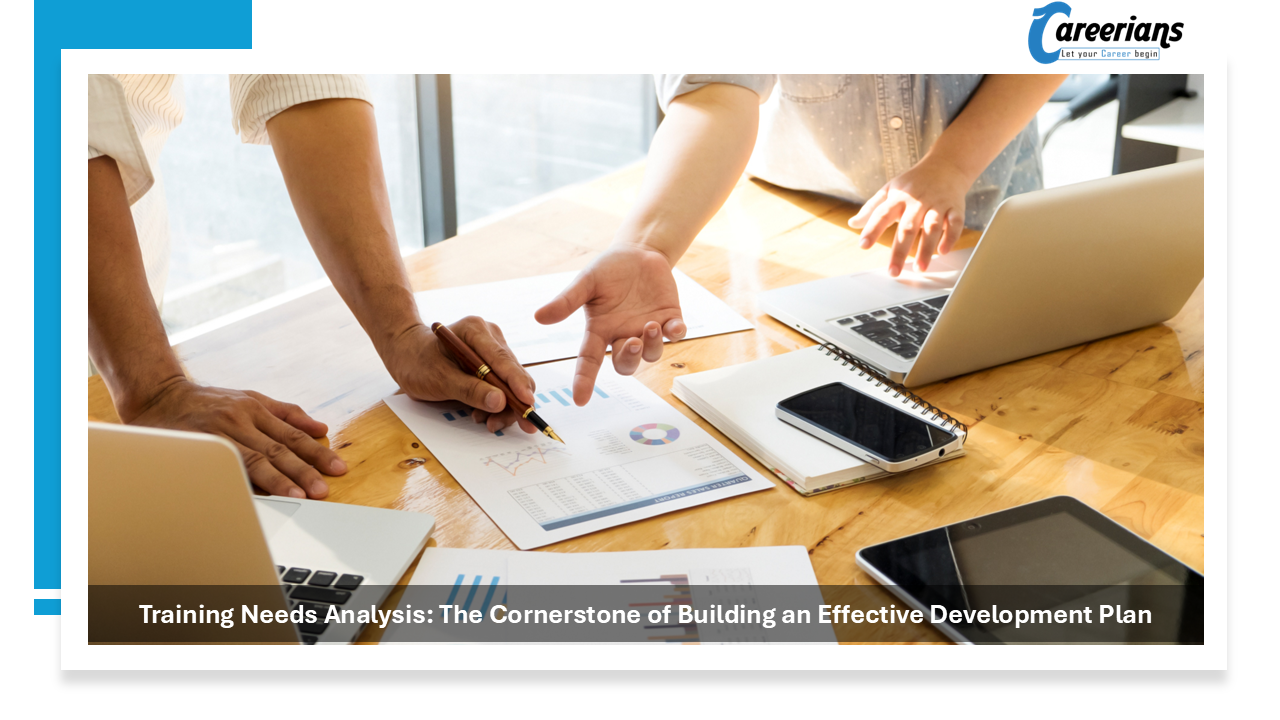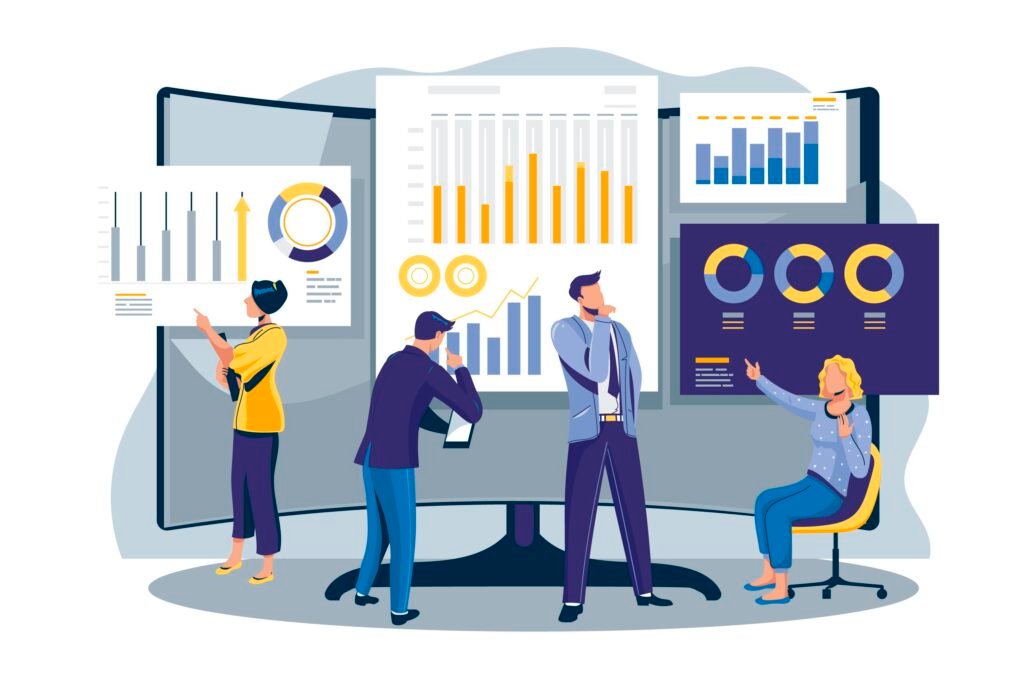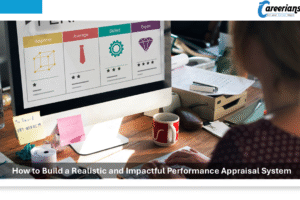
Training Needs Analysis: The Cornerstone of Building an Effective Development Plan
Training Needs Analysis: The Cornerstone of Building an Effective Development Plan
Every company dreams of having a strong, capable workforce that drives growth and excellence.
But the real question is always the same: Where should we start?
The answer is clear — from Training Needs Analysis (TNA).
No training program, however well-designed, can deliver real impact unless it’s based on a deep understanding of what employees actually need to perform better.
In many medium-sized companies across Egypt and the Gulf, training is still treated as a formality: choose a few ready-made courses, send some employees, collect the certificates — and call it a day.
But after the program ends, nothing really changes. Performance stays the same, mistakes are repeated, and managers start believing that “training doesn’t work.”
The truth is: training without proper needs analysis is just guesswork.
In this article, we’ll walk through a complete, practical guide to building an effective Training Needs Analysis process — one that transforms training from a cost into a strategic investment with measurable business results.
What Is Training Needs Analysis (TNA)?
Training Needs Analysis is a systematic process for identifying the gap between current performance and desired performance — whether at the individual, team, or organizational level.
In simpler terms, it answers two essential questions:
-
What should employees be able to do?
-
What are they actually doing now?
The difference between the two defines the training need.
However, TNA is not just a survey or a formality.
It’s a structured process that combines data from performance appraisals, business goals, feedback from managers and customers, and future company directions — all to ensure that development efforts are targeted and meaningful.
Why Training Needs Analysis Matters
-
Ensures investment in the right areas
You stop wasting money on random courses and focus on what truly drives performance improvement. -
Aligns training with business strategy
Training becomes a tool to achieve strategic goals, not just an HR activity. -
Boosts employee motivation and engagement
Employees feel valued when training programs are clearly linked to their actual job challenges and career growth. -
Enables measurable ROI
Because you know exactly what gap you’re trying to close, you can track results before and after the intervention.
The 6 Key Steps of Effective TNA

1. Start with the Company’s Strategic Goals
Training should never start with “what courses do we have this year?”
It starts with “what do we want to achieve as a company?”
Are you expanding into a new market?
Launching a new product?
Struggling with quality, customer retention, or employee turnover?
Your training needs must directly support these priorities.
Example:
-
A logistics company planning to expand in the Gulf → needs to prepare new branch managers with leadership and planning skills.
-
A food manufacturing company facing safety issues → needs technical and compliance training programs.
Every TNA should clearly connect the dots between organizational strategy and people capabilities.
2. Analyze Jobs and Roles
This step defines what “good performance” looks like in each role — and what’s missing.
You need to know:
-
What are the key responsibilities of the job?
-
What knowledge, skills, and behaviors are required to perform it well?
-
What’s the current level of competence among employees?
That’s why a clear and updated Job Description is your best friend in TNA.
It’s your reference point for what’s expected versus what’s happening.
For instance, a customer service representative might be expected to:
-
Handle client inquiries efficiently,
-
Use the CRM system accurately,
-
Communicate with empathy and professionalism.
If the employee struggles in one of these areas, that’s where the training need lies.
3. Collect the Right Data
This is where the real discovery happens.
You can use a mix of methods depending on the size and culture of your company:
-
Employee surveys – Great for identifying perceived needs and collecting quantitative data.
-
Manager interviews – Provide deep insights into performance gaps and operational challenges.
-
Observation – Ideal for technical or field-based jobs.
-
Performance appraisal reports – Show trends and problem areas.
-
Customer feedback and complaints – Reveal service or communication gaps that employees may not notice.
For medium-sized companies, a practical combination is:
-
Short online surveys for employees,
-
Structured interviews with department heads,
-
Review of recent KPI or appraisal data.
4. Analyze the Data and Identify Gaps
Once the data is collected, the next step is classifying and interpreting it.
You’ll often find four types of gaps:
-
Knowledge Gaps – Lack of theoretical understanding (e.g., policies, procedures, or concepts).
-
Skill Gaps – Weakness in applying knowledge practically.
-
Behavioral Gaps – Attitude or mindset issues that affect performance.
-
Systemic Gaps – Problems caused by unclear processes or lack of tools (not training-related).
This distinction is critical.
If the problem is caused by poor systems or policies, no training will fix it.
That’s why smart HR teams always ask:
“Is training really the solution — or is it something else?”
5. Prioritize the Training Needs
Not all needs are equally urgent.
You need to focus where impact will be the highest.
Use a simple prioritization matrix based on two factors:
-
Impact on business goals
-
Urgency of the gap
| Priority Level | Description | Example |
|---|---|---|
| High Impact – High Urgency | Must address immediately | Sales team struggling to close deals in new markets |
| High Impact – Low Urgency | Important but can be scheduled later | Leadership pipeline for future expansion |
| Low Impact – High Urgency | Quick fixes but not strategic | System refresher training |
| Low Impact – Low Urgency | Low priority | Optional soft skills workshops |
This helps you build a focused and realistic annual training plan.
6. Develop the Training Needs Report
At the end of the process, the HR or L&D team prepares a formal report summarizing:
-
Strategic objectives linked to training
-
Identified skill and competency gaps
-
Target employee groups
-
Recommended programs and delivery methods
-
Estimated costs
-
Implementation timeline
This report becomes the foundation for the company’s annual Learning & Development plan.
A Practical Case from the Real World
Let’s look at a real-life scenario from a mid-sized logistics company in Egypt.
The Problem:
Frequent delivery delays and rising customer complaints.
What They Did:
Instead of launching a generic “Customer Service” training, they started with a proper TNA.
The Findings:
-
Drivers lacked technical knowledge of the GPS tracking system (Digital gap)
-
Supervisors weren’t following up properly (Managerial gap)
-
Customer service staff had a defensive tone with clients (Behavioral gap)
The Solution:
The L&D team designed a three-part program:
-
Hands-on digital training for drivers on system use
-
Coaching for supervisors on team monitoring
-
Soft skills workshop for the customer service team
The Results:
Within three months, on-time deliveries improved by 22%, and customer complaints dropped by 40%.
That’s the power of data-driven training needs analysis.
Leveraging Digital Tools for TNA
Today, technology makes TNA faster, smarter, and more accurate.
Some key digital enablers include:
-
Learning Management Systems (LMS): Track participation, completion, and skill progression.
-
HRIS Dashboards: Provide performance metrics linked to training outcomes.
-
Online Surveys: Quick and efficient data collection through platforms like Google Forms or Typeform.
-
AI-based Skill Analytics: Used increasingly in Gulf-based companies to predict future skill gaps.
The digital era has transformed TNA from a manual HR process into a strategic analytics function.
Common Challenges in Medium-Sized Companies
-
Lack of reliable data
Without structured performance appraisals, it’s hard to quantify skill gaps. -
Manager resistance
Some managers perceive TNA as criticism rather than support. -
Limited budgets
Especially when management sees training as a cost, not an investment. -
No dedicated L&D professional
Many HR teams handle training as an extra task, not a specialized function.
The solution starts with awareness and proof of impact.
Once management sees tangible results, support and budget grow naturally.
Linking TNA to the Learning & Development Plan
A successful Training Needs Analysis should always feed into a comprehensive L&D plan that includes:
-
Annual learning objectives
-
Target audience and job levels
-
Recommended training programs
-
Delivery methods (in-person, virtual, or blended)
-
Budget allocation
-
Evaluation methods (Reaction, Learning, Behavior, Results – the Kirkpatrick Model)
Planning evaluation criteria from the start ensures accountability and helps you measure ROI effectively.
Building a Learning Culture
TNA isn’t just an HR exercise — it’s a mindset.
Organizations that regularly ask “what can we improve?” create a continuous learning culture that keeps them competitive.
When employees see that the company invests in their real development — not just token workshops — engagement rises, turnover drops, and productivity grows.
Medium-sized businesses in Egypt and the Gulf can especially benefit from this mindset. They’re big enough to need structured systems, yet flexible enough to adapt fast.
Careerians Insight
A powerful TNA process turns training from a routine HR task into a strategic driver of performance.
It aligns people’s growth with the company’s direction — and ensures that every training pound or riyal spent leads to measurable business improvement.
Start small.
Pick one department.
Identify what’s missing, collect the data, and design a targeted solution.
You’ll quickly see how performance gaps begin to close — and how development becomes a source of growth, not just compliance.




